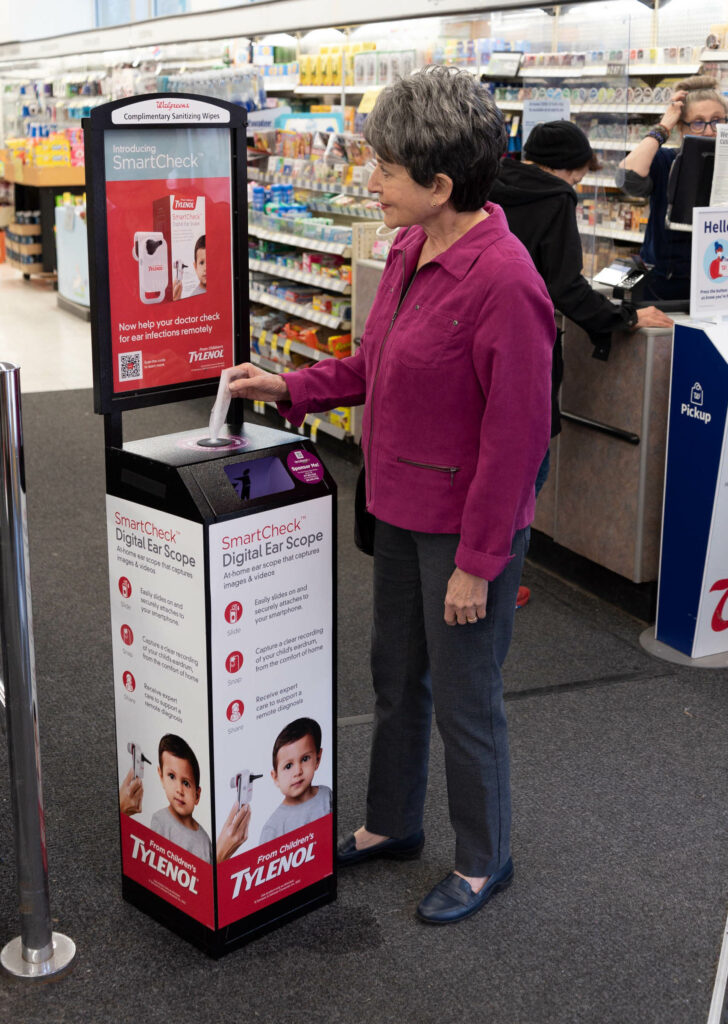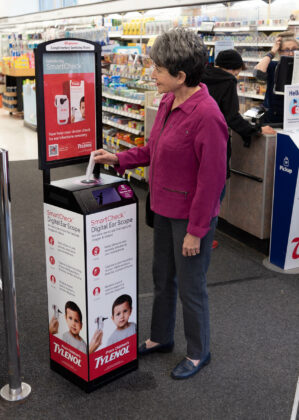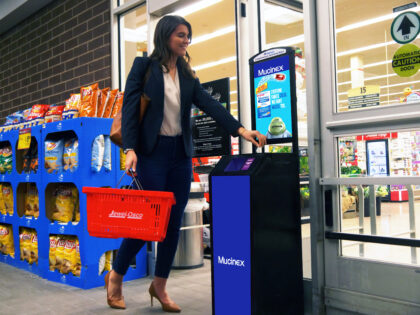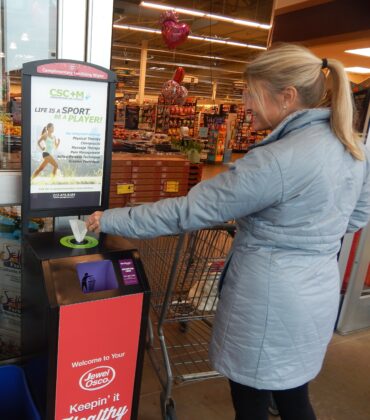Shopper marketing reaches consumers when they are close to making a purchase decision, which is also when they are easiest to influence.
If you’re looking to understand what makes for an effective shopper marketing campaign, read on for the top strategies and the latest grocery store advertisements innovations that are crucial to utilize.
What is Shopper Marketing?
Shopper marketing describes all the strategic advertising techniques that a business will deploy to influence consumers as they are shopping. The goal is to advertise to customers before they make a purchase. Other forms of marketing differ in that they primarily seek to boost general brand awareness while shopper marketing focuses on providing consumers with a final nudge toward a purchase decision.
Top Shopper Marketing Strategies
Shopper marketing strategies must consider the mentality of the consumer and what type of in-store ad placements would best appeal to them. Some factors to consider are your target audience, which store areas are most frequented, and typical in-store behaviors.
Once you have a good idea of how best to reach and appeal to your audience, you can then select the optimal advertising formats. Here are some of the top marketing strategies and advertising formats to consider:
In-store Displays

There’s a good reason why in-store displays with sales point marketing are the most commonly used shopper marketing strategy– they excel at attracting consumer attention. In-store displays include things like point-of-purchase ads, endcap displays, or even tactically placed interactive screens.
The key to in-store advertising is catching the eyes of shoppers and having them engage with the sponsored brand, and few display formats do this better than wellness boards. These wellness boards dispense sanitizing wipes below a prominently featured advertisement. For a deeper understanding of how these work, check out these onsite marketing strategies.
Sanitizing kiosks excel at driving consumer engagement since many shoppers appreciate a wipe after touching shopping carts and store items. Terraboost is an innovator in wellness board advertising and their success is backed by independent studies that found that 80% of shoppers engaged with sanitizing kiosks and 50% took a coupon or brochure to learn more.
Digital Strategies
Even if you don’t have an online store, you should still be using digital strategies to influence consumers. There are a variety of advanced marketing tools such as retargeting and geofencing that we will discuss later, but more basic digital options such as QR codes, mobile apps, digital receipts, and email marketing campaigns can provide an impressive boost in sales.
Many retailers fail to properly leverage receipts given to their shoppers. Digital receipts make it easy to analyze consumer preferences and which types of deals they respond to. Also, providing digital receipts allows retailers to gain a substantial email list that provides another touchpoint to engage with consumers and entice them with mobile deals, coupons, and other promotions.
Loyalty Programs
Shopper marketing displays can also be used to encourage consumers to sign up for loyalty programs. Cashiers are commonly the ones to solicit consumers to join loyalty programs, but you can also create in-store displays with QR codes that allow shoppers to sign up on their own. It’s a good idea to feature the primary perks of joining the loyalty program in these displays.
Loyalty programs can incentivize repeat customers through a reward structure that provides more in-store points or coupons based on higher spending levels. These programs also help retailers maintain regular communication with their consumers via email, mobile app notifications, or a dedicated member portal.
Experiential Marketing
Experiential marketing works to create an immersive and memorable experience for consumers. One of the best ways to do this is through demo stations that show consumers how to properly use a featured product or sample tables that let them taste new snacks and beverages. Sampling stations located near checkout lines can greatly increase sales since many consumers don’t mind adding an additional tasty treat to their cart.
No immersive environment is complete without appealing to shoppers’ ears. Sound systems can play music to keep shoppers in a pleasant mood, but they can also be used to announce events, deals, and to deliver audio advertisements for specific products.
Shopper Marketing Examples
Starbucks’ Rewards Program
Photo via Starbucks
Starbucks’ loyalty program is a perfect example of how to use incentives to keep your consumer base hooked. In 2019, Starbucks saw a 7% increase in sales due to its new reward offers.
Consumers earn in-store points, or stars, for everything including downloading the app, online purchases, and of course, buying coffee. These points can then be spent on free drinks, breakfast sandwiches, and merchandise. Successful loyalty programs, like the one Starbucks deployed, use a tier system to increase rewards based on spending levels.
IKEA’s Augmented Reality Catalog
Photo via Architect Magazine
Though shopper marketing is often associated with in-store displays, it can also be used in online stores to great effect.
IKEA’s shopper marketing campaign used an augmented reality app that makes selecting the right furniture easy from the comfort of your home. Through the app, consumers can select and virtually place furniture into rooms of their homes. The virtual reality catalog was massively successful in driving online sales and the application was downloaded 200,000 times in its first week.
Target’s Cartwheel App
Photo via Target
The Cartwheel app offers a selection of discounted goods that changes each week. While this is certainly easy to use in Target’s online store, in-store shoppers can use the Cartwheel app to scan items and show related coupons on their phones to cashiers.
Target’s application makes finding savings easy for consumers through a modern form of coupon clipping. The Cartwheel app also helps to foster a brand community with a feature that lets you compare how your savings stack up against your Facebook friends.
Home Depot’s DIY Workshops
Photo via Decor Adventures
Home Depot has deployed a variety of both in-store and online workshops to embrace their brand’s DIY culture. In 2022, they produced close to 600 customer workshops and 97% of attendees were satisfied with the workshop experience.
Each business is unique and must cater to its own unique audience. Home Depot’s experiential marketing campaign was such a success because it appealed directly to its target audience and provided valuable home renovation insight.
Is Shopper Marketing Effective?
Shopper marketing is immensely effective in appealing to consumers and increasing their average transaction amount.
Some of the most effective shopper marketing campaigns use eye-catching displays that showcase limited-time offers. These displays work because they instill a sense of urgency in shoppers and help to push them towards a purchase.
If you’re looking to deploy a successful shopper marketing campaign, it’s important to carefully analyze the promotions you offer consumers. The deals and savings must be large enough to entice shoppers but leave enough margin for meaningful profits. Once you find the sweet spot, the increased sales from your marketing efforts will compensate for any discounts offered.
Trends in 2023
Cutting-edge marketing experts are making full use of new technologies that help to target consumer groups and convert new customers.
Geofencing and retargeting are being adopted by more and more retailers and brands to boost sales. Geofencing uses the anonymized mobile data of shoppers to send them digital advertisements on their phones once they’ve crossed a virtual barrier. For example, Starbucks has geofenced shopping areas to send push notifications describing limited-time offers to nearby phones.
Retargeting and grocery store remarketing similarly tracks anonymized mobile data but delivers pre-programmed ads to consumer devices after they’ve shopped. Let’s say that a consumer takes a sanitizing wipe from a wellness billboard equipped with retargeting capabilities. That shopper would then receive an online advertisement for the same sponsored brand the next time they use a website or search engine on their phone.
Some marketing experts are even using artificial intelligence (AI) to predict customer behavior. AI can quickly analyze data sets and provide key insights into your target audience and the type of ad placements they’d be most susceptible to. These AI systems can help with buying programmatic digital ad space, serve as customer assistant chatbots, and even create new products and services.
There has also been a rapid increase in the use of virtual reality for online stores. Many consumers love shopping online but hesitate to make certain product purchases until they see it in person. Virtual reality applications, like IKEA’s online catalog, can help shoppers feel comfortable making an online purchase as they’ve sufficiently seen the product and how it would look in their home.
Consumer trends are always changing and it can be difficult to keep up with the latest marketing trends.
That’s why it can be a good idea to partner with an experienced marketing firm to make sure you take the right steps forward. Terraboost is an innovator when it comes to in-store marketing and has a network of over 120,000 wellness billboards that deliver 8.8 billion monthly engagements.
So, if you’re looking for some key industry insights on how to successfully deploy a shopper marketing campaign, get in touch with a Terraboost agent today for a free personalized quote.



